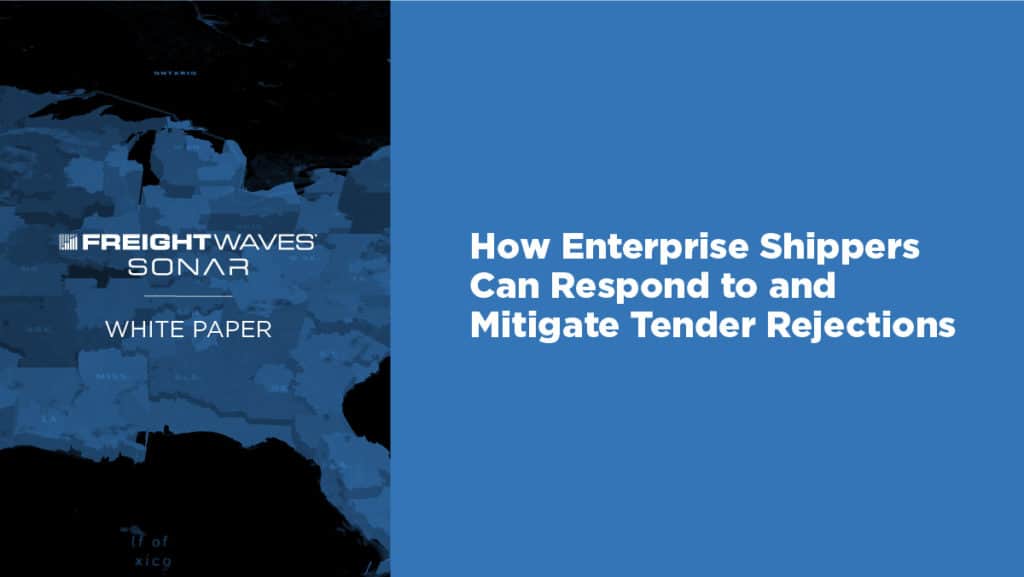The shipping industry is continuing to suffer the effects of a pandemic-driven demand that some carriers simply cannot handle. As reported by Logistics Management, Bart De Muynck, vice president of research at Gartner, had this to say, “We’re seeing hours-of-service changes, insurance costs going up, incidences going up, and the size of the related verdicts also increasing. Carriers are going bankrupt for a variety of different reasons, all while everyone is obviously also feeling the impact of the pandemic.”
The industry is experiencing all-time high demand, and for carriers, improper asset allocation dramatically increases the risk of blowback and bankruptcy. With the need to move freight faster, a leading decision in choosing a carrier among shippers today, any delay could be the proverbial nail in the coffin for a struggling carrier. However, looking beyond the short-term, freight lane-specific data can go a long way to optimizing asset allocation and avoiding these risks. And it’s important to understand why.
Asset allocation remains a top-of-mind subject for carriers and asset-based freight brokers alike. And figuring the optimum asset allocation amounts to knowing the inbound versus outbound volume for each freight market. In FreightWaves SONAR, these insights reside within freight lane headhaul indices. Each index shows the percent change over time and helps asset-based transportation service providers manage assets better.
Tracking tender rejection freight rates is another opportunity for carrier operational efficiency in managing freight lane movements. Knowing how difficult it will be to find an available load in markets where volumes are high and rejections are low, helps carriers avoid deadheading while maximizing profitability per load.

Greater trouble in securing headhauls or backhauls for markets with a high volume index also plays into freight lane asset allocation. As indexed volumes decrease and rejections balance, carriers will need to look to shippers with a longer lead time. In other words, the increased lead time allows for more effective planning and more time to find an applicable headhaul or backhaul for a given market.
Any conversation on freight lane asset management should also consider the role of drivers. Remember that drivers are a core resource within transportation management. And the limitations of HOS regulations mean drivers can be much more of a commodity when balancing loads across each freight lane, affecting seasonal trucking employment (EMPN.TRUK). Carriers should continuously monitor driver HOS schedules and expectations. That is essential to avoiding losses or unnecessary delays when a driver appears to have enough time remaining but is still unable to move freight. For instance, delays due to weather or traffic could lead to longer drive times and affect total HOS count.
More insight into the market helps to measure market volatility across each freight lane as well. Of course, nationwide market insights can only go so far when used to manage assets that move across the country. For that reason, carriers need to measure market volatility, such as freight lane acuity, within individual lanes, OD pairings and individual markets. By viewing the data using different contrasts, carriers can balance freight loads accordingly and avoid unnecessary costs.
Another resource for effective asset allocation across each freight lane goes back to how well data and analytics work together. While every carrier or 3PL offers some form of analytics, it’s important to look for a few characteristics. For instance, does the insight consider a large enough dataset, and what type of data is excluded or used to derive such insights? After all, the best analytics engines on the planet will lack value when working with a smaller dataset or relying on outdated modeling resources.
Effective freight lane asset allocation begins and ends with staying in the know. And FreightWaves SONAR provides an immeasurable resource for tracking and managing assets across each freight lane, through all freight markets and in the real context of the industry. Stop trying to manage without the right data at your fingertips, and put the power of an advanced freight data engine to work in your organization. Request a FreightWaves SONAR demo to get started today, or click the button below.
